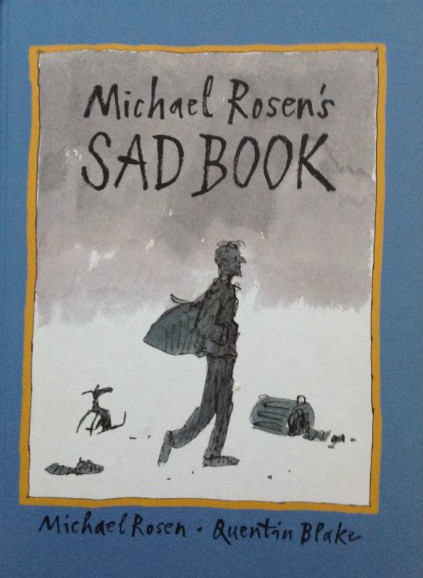Inspiring Young Readers
 posted on 27 Nov 2016
posted on 27 Nov 2016
Michael Rosen’s Sad Book by Michael Rosen illustrated by Quentin Blake
When you look at Michael Rosen’s fantastic books for children of all ages, and, if you’re fortunate enough to hear him talk about his books to adults or children you can’t help but be struck by how vibrant and full of life he is. He’s also a passionate man who has strong political beliefs and a commitment to social justice that runs deeply into his core and he’s never afraid to say what he thinks in the most engaging way without ever being unnecessarily disrespectful or crass.

So his public persona is always vital and upbeat - but, of course, life can’t always be like that. We all have our mishaps and tragedies to contend with and its often in these circumstances that we get a true measure of the person at the centre of it all. Michael Rosen has had, I would suggest, more than his fair share of personal grief – illness, marriage breakdown and, most distressing of all, the death of his 18 year old son Eddie from meningitis in 1999.

It is the impact of this dreadful latter tragedy that Michael Rosen’s Sad Book explores – with truly heart-rending honesty. Rosen describes just how being sad – deeply depressed in fact – feels and how he has tried to cope with it. He shows how in the aftermath of a loss like this much of his time is spent trying to find ways to live something approaching a normal life and trying to understand how to manage his everyday affairs. Inevitably the face he has to show the outside world is a mask that hides the hurt and, although the memories of his son are brilliant, vibrant and comforting ultimately the pain never goes away.
I suspect there are quite a few adults who would question whether a book that deals with the consequences of a death in this sort of bravely honest way is appropriate for children to read at an impressionable age – but I think that would be a wrongheaded approach. The subject of sadness and loss is something children can and need to be able to engage with and giving them the chance to empathise with someone else in the relatively safe space provided by a book is a positive way to deal with emotions many children will inevitably encounter themselves.

And, of course, it’s all about how the tale is told. Rosen knows how to talk to children in a way that they can handle and, alongside Quentin Blake’s masterful illustrations, both the author and illustrator take the reader by the hand and lead them through what might otherwise be a very dark space. Blake’s drawings are superb and the choice of colours helps set a mood – the stormy gloomy grey that becomes the backdrop for Rosen’s world works as an effective contrast with the colours of the rest of the outside world. It’s a technique that really comes into its own on the very last page when the encroaching grey misery threatening to engulf Rosen is kept at bay by the vivid orange flame of the candle of remembrance and hope .
I defy you to read this book without finding a tear in your eye or a lump in your throat. What we have here isn’t a mawkish and sentimental misery memoir for children but an honest, heartfelt and supremely brave statement about the human condition. It’s a book everyone should read whatever age you are.
Terry Potter
November 2016
